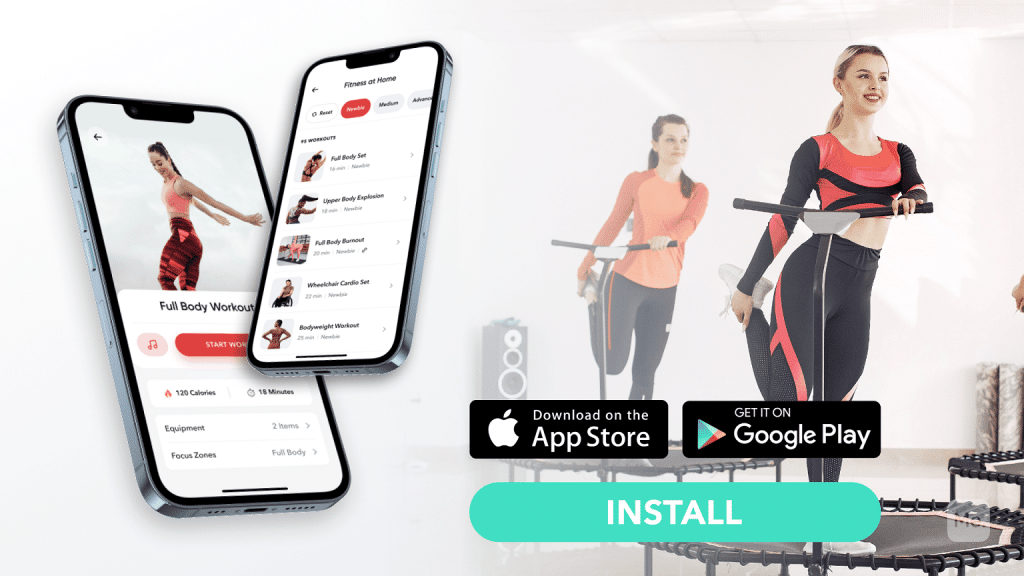Both beginners and advanced lifters are concerned with how often and how heavy they lift. What you want is a consistent routine that will challenge your muscles so you can see results now and you also want to progressively overload so that you continue to see results later. In this process you may not realize that your lifting pace matters just as much as the amount of weight on the bar. Lifting at a super slow pace may sound like a beginner’s workout, but it can be quite challenging, even for experienced lifters. The key is to use a lighter weight than you’re used to using and move at a snail’s pace, taking at least 10 seconds to complete a single rep. Why would you want to do this? Let’s explore what super slow strength training is and some of the benefits you may experience from adding it to your workout routine.
What Is Super Slow Strength Training?
Super slow strength training is a type of lifting protocol that focuses on lifting weights slowly and with control. Think of it as slowly grinding out reps rather than trying to move the weight as fast as possible.
Is Super Slow Training Effective?
The idea behind super slow strength training is that by lifting weights slowly you can better target the muscles you’re trying to work and avoid using momentum to cheat the lift. This results in a more effective workout for your muscles and helps prevent injuries.
Below are some of the reasons why a super slow strength training program might be good for you:
1. It Helps You Perfect Your Form
Form refers to the way you position your body and the weight during an exercise. Proper form is important in all types of exercise from lifting to running, but it’s especially important when lifting weights (10).
Using proper form during lifting can help you target the right muscles. For example, squatting with the correct form will target your glutes and quads, whereas squatting with bad form may cause you to use your lower back muscles too much, which can lead to injury.
When you’re not focused on moving the weight quickly, you can better focus on keeping your body in the correct position and using the right muscles. This can help you to avoid injuries and get the most out of your workout.
2. It Reduces Your Risk Of Injury
Speaking of injuries, lifting weights slowly can help reduce your risk of sustaining one. When you lift weights quickly, you’re more likely to use momentum to cheat the lift, which puts a strain on your muscles and joints.
Lifting weights slowly allows you to better control the weight and avoid using momentum, which can help to prevent injuries.
3. It Increases Muscle Endurance
Muscle endurance is the ability of your muscles to keep working over a period (5). When you lift weights quickly, your muscles can only work for a short period before they become tired.
Lifting weights slowly, on the other hand, allows your muscles to work for a longer period, which can help to increase muscle endurance.
Read More: Barbell Workout Plan For Beginners
4. It’s Good For Your Joints
Lifting weights quickly can put a lot of strain on your joints, which can lead to joint pain or injuries. Lifting weights slowly helps to reduce the amount of strain on your joints, which can help to keep them healthy (6).
Jerky motions can also cause your joints to move out of alignment, which can lead to pain and stiffness. Lifting weights slowly helps to avoid this because you gradually move the weight through a range of motion, which is easier on your joints.
5. It May Help You Build Muscle
While more research is needed, some studies have found that super slow strength training may help you build muscle. One study found that lifting weights slowly can help to increase muscle size (7).
Another study found that super slow training may help increase muscle strength more than traditional lifting protocols (3).
6. It’s Suitable For People With Limited Mobility
The SuperSlow program’s developer Ken Hutchins investigated the effects of resistance training on older women with osteoporosis. He found that super slow training was an effective way to help these women increase their muscle strength and bone density (8).
Slow movements are ideal for people with limited mobility because they can help reduce the risk of injuries (4).
7. It’s Good For Beginners
Super slow strength training is an excellent option for beginners because it’s easy to learn and teaches the basic principles of lifting, such as proper form and how to control the weight.
Plus, because you’re lifting slowly, you can better focus on form and technique, which is important for beginners.
Dropping pounds by the dozens without putting yourself through the wringer is everyone’s weight loss pipe dream. But what if we told you that the BetterMe app can make that happen? Keep yourself in prime shape with our fat-blasting workouts, delicious budget-sparing recipes, and body-transforming challenges with our app!
How To Establish A Super Slow Workout Routine
If you have an existing routine and would like to modify it to include slow reps, and controlled movements, do this:
Reduce The Weight
The current weight you’re lifting is probably too heavy to lift slowly. For example, if you can squat 200 pounds for 10 reps, reduce the weight to 50-60% of what you can lift, and perform the exercise in a 5-10 second range.
So, if you can squat 200 pounds for 10 reps, you would use 100-120 pounds and lift the weight in a 5-10 second range.
Use A Full Range Of Motion
When you perform the exercises slowly, be sure to use a full range of motion. This means moving the weight through the entire range of motion for that particular exercise.
For example, when you perform a biceps curl, be sure to lower the weight all the way down to your side before curling it back up.
Perform The Same Exercise For Both Sides
If you’re doing a unilateral exercise, such as a lunge, be sure to perform the same number of reps on both sides.
This helps to ensure that you’re working both sides of your body evenly and helps to prevent imbalances.
Start With A Warm-Up
Before you begin your workout, be sure to warm up with light cardio and dynamic stretching. This helps to prepare your body for the workout and can help prevent injuries (9).
Cool Down And Stretch
After your workout, be sure to cool down with light cardio and static stretching. This helps to bring your heart rate down gradually and can help to prevent soreness (2).
Static stretching is essential after lifting weights because it helps to lengthen your muscles and can reduce the risk of injuries (1).
Read More: Effective And Simple No Equipment Workout Plan
Sample Workout
Here’s a sample workout that you can do to get started with super slow strength training:
Warm-Up
- 10 minutes of light cardio – jump rope, jogging in place, or on the treadmill.
- Dynamic stretches – leg swings, arm circles, or, weightless reps of the exercises you’ll be doing – bodyweight squats, lunges, etc.
Main Workout (Full Body)
Perform the following exercises in a slow and controlled manner. It can help to mentally count down from 5 as you lower the weight and then count back up from 5 as you raise it.
Control your breathing, and develop a mind-muscle connection (think of the muscle you’re targeting as you perform the exercise).
Target the Quads, Hamstrings, and Glutes (3 sets of 10-12 reps)
- Bodyweight Squats
- Dumbbell Lunges
- Glute Bridges
Target the Chest, Back, and Shoulders (3 sets of 10-12 reps)
- Dumbbell Chest Press
- Dumbbell Rows
- Shoulder Press
Target the Biceps and Triceps (3 sets of 10-12 reps)
- Dumbbell Curls
- Triceps Pushdowns
Cool Down And Stretch
- 5-10 minutes of light cardio – jump rope, jogging in place, or on the treadmill.
- Static stretches – hold each stretch for 30 seconds or longer.
Want to build an attention-grabbing bubble butt, blast away fat that’s stored in all the wrong places, spring-clean your diet, turn back the clock on your skin, skyrocket your self-confidence and shatter your insecurities? Check out the BetterMe app and set this plan in motion!
Is Super Slow Strength Training For You?
Knowing what super slow strength training can and can’t do is a good idea. Depending on your goals, this training program may not be a good fit and you’ll end up spending a lot of time without seeing results.
A super slow lifting routine is ideal for you if:
- You’re a beginner – If you’re just starting, this type of program can help you to learn the proper form and technique for lifting weights.
- You have injuries – If you have injuries, this type of program can help you safely rebuild your strength.
- You want to correct your form – as an advanced lifter, if you find that your form has gotten sloppy, this type of program can help you to correct it.
Super slow lifting may not be a good fit for you if:
- You’re an experienced lifter – If you’ve been lifting weights for a while, this type of program may be too slow and frustrating for you.
- You want to see quick results – if you’re looking for a program that will help you to see quick results, this isn’t it.
The Bottom Line
Super slow strength training is a great way to improve your fitness level and overall health. It’s easy to learn, suitable for all fitness levels, and has several benefits. So, if you’re looking for a new workout routine, give super slow strength training a try!
Get your personalized
meal plan!
DISCLAIMER:
This article is intended for general informational purposes only and does not serve to address individual circumstances. It is not a substitute for professional advice or help and should not be relied on for making any kind of decision-making. Any action taken as a direct or indirect result of the information in this article is entirely at your own risk and is your sole responsibility.
BetterMe, its content staff, and its medical advisors accept no responsibility for inaccuracies, errors, misstatements, inconsistencies, or omissions and specifically disclaim any liability, loss or risk, personal, professional or otherwise, which may be incurred as a consequence, directly or indirectly, of the use and/or application of any content.
You should always seek the advice of your physician or other qualified health provider with any questions you may have regarding a medical condition or your specific situation. Never disregard professional medical advice or delay seeking it because of BetterMe content. If you suspect or think you may have a medical emergency, call your doctor.
SOURCES:
- CURRENT CONCEPTS IN MUSCLE STRETCHING FOR EXERCISE AND REHABILITATION (2012, ncbi.nlm.nih.gov)
- Do We Need a Cool-Down After Exercise? A Narrative Review of the Psychophysiological Effects and the Effects on Performance, Injuries and the Long-Term Adaptive Response (2018, link.springer.com)
- Effects of regular and slow speed resistance training on muscle strength (2001, pubmed.ncbi.nlm.nih.gov)
- How to Exercise with Limited Mobility (n.d., helpguide.org)
- Physical Fitness and Its Components (n.d., physio-pedia.com)
- Resistance Training is Medicine: Effects of Strength Training on Health (2012, journals.lww.com)
- Strength Gains as a Result of Brief, Infrequent Resistance Exercise in Older Adults (2014, hindawi.com)
- Super Slow Resistance Training (n.d., unm.edu)
- The effect of warm-ups with stretching on the isokinetic moments of collegiate men (2018, ncbi.nlm.nih.gov)
- Weight training: Do’s and don’ts of proper technique (2020, mayoclinic.org)











